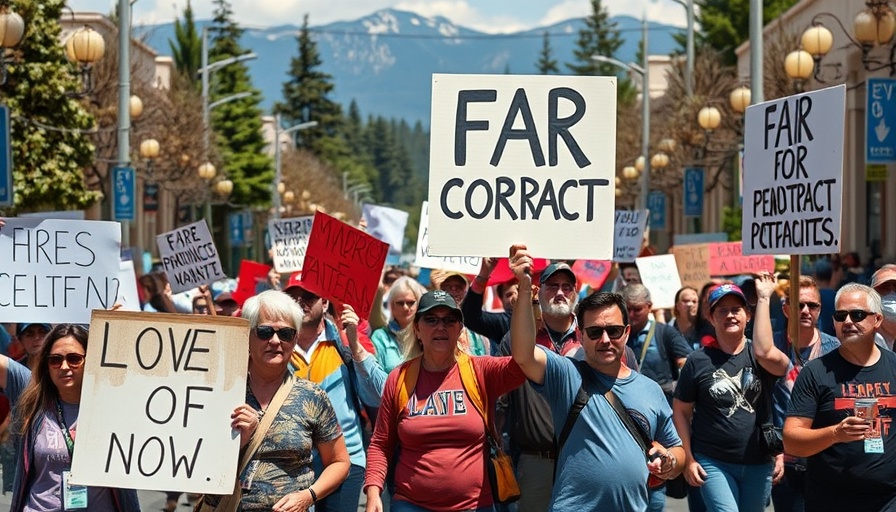
Healthcare Workers Stand United for Better Wages
An unprecedented strike involving 31,000 registered nurses and healthcare workers at Kaiser Permanente has taken center stage, marking a pivotal moment in labor rights within the healthcare sector. This action, which calls for better wages and improved staffing, is unfolding across 500 medical centers and offices in California, Hawaii, and Oregon. Organizers from the United Nurses Associations of California assert that this is the largest strike in the organization's 50-year history, with potential to grow to 46,000 participants as more professionals join in solidarity.
The Impact of Inflation on Wages
The striking healthcare workers are demanding a substantial pay increase of 25% over the next four years, which they argue is essential to keep pace with inflation and adverse working conditions. They state that their wages have lagged significantly, approximately 7% lower than their peers in comparable roles. Kaiser Permanente disputes this claim, stating that its employees earn an average of 16% more than workers at other similar institutions. Nonetheless, the issue remains whether this statistic accurately reflects the struggles these workers are experiencing on the ground.
Kaiser Permanente's Response and Operations During the Strike
In response to the strike, Kaiser Permanente insists that it will continue providing healthcare services, indicating that essential surgeries and procedures might be rescheduled, and some non-urgent appointments will transition to virtual formats. This reflects a proactive approach to minimize disruption to patient care. While the organization proposes a 21.5% wage increase over the same four-year timeframe, it poses the question: are these increases sufficient to address the needs of frontline staff?
The Broader Implications of the Strike
This strike does not exist in isolation; it taps into a larger narrative of labor movements gaining momentum across sectors, especially post-pandemic. There is a recognized strain on healthcare systems, revealed during global health crises like the COVID-19 outbreak, leading to increased advocacy for both healthcare providers and patients. Issues such as staffing shortages and burnout among healthcare professionals have left many questioning the sustainability of existing practices in hospitals and clinics.
Historical Context: A Look Back at Labor Strikes in the Healthcare Sector
The history of labor strikes in healthcare highlights long-standing issues of worker rights and patient care. Over the years, strikes have often been catalysts for significant reforms and negotiation shifts regarding wages, working conditions, and patient treatment standards. This current action by nurses at Kaiser Permanente reflects a growing recognition of the worth and essential nature of healthcare workers, aligning with similar strikes seen across the nation.
What This Means for the Community
For residents of Davenport, Polk County, and Central Florida, this labor action may raise questions about local healthcare accessibility and the future of services. As frontline workers rally for better conditions, it symbolizes a demand for community support of healthcare staff—a reminder of the vital role they play in maintaining public health. The healthcare workforce, often referred to as the backbone of the system, is integral not just in normal times but especially during crises.
Looking Ahead: Future Predictions for Healthcare Labor Relations
The results of this strike may set the tone for future labor negotiations within the healthcare sector. Increased transparency and dialogue between health organizations and their workers could emerge as essential components to prevent such actions in the future. Moreover, as more organizations face similar staffing and wage issues, collective bargaining may become a more common route for advocacy in labor relations across various sectors.
In conclusion, the actions by Kaiser Permanente's healthcare workers resonate beyond their immediate demands for better wages. They serve as a clarion call for reform in how healthcare entities value their employees and ensure patient care remains a priority. The forthcoming days will reveal the resolution of this conflict and its broader impact on healthcare quality and labor relations.
 Add Row
Add Row  Add
Add 




Write A Comment